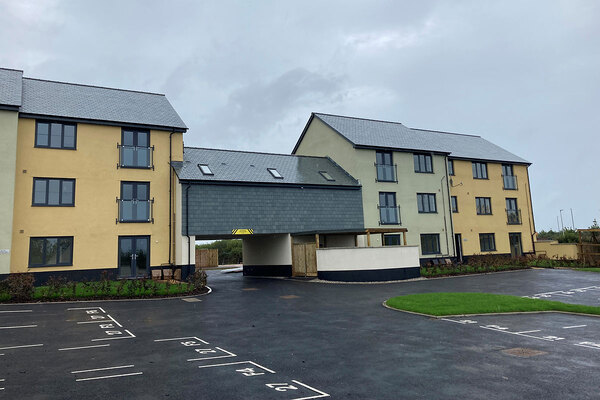You are viewing 1 of your 1 free articles
Wheelchair-accessible homes could save tens of thousands per user in care costs, report finds
Building homes for wheelchair users could save disabled people and the government thousands of pounds in care costs over a 10-year period, a report has found.
Research from the London School of Economics’ housing and communities research group has calculated that for a typical disabled adult of working age, the additional cost of building a ‘wheelchair user’ home was around £22,000.
This is as opposed to an ‘accessible and adaptable’ home (which still requires adaptations such as access-level showers and stairlifts).
Commissioned by Habinteg Housing Association, the report found that over a 10-year period, the financial and social benefit to the working-age disabled adult and government of the wheelchair user home was around £94,000.
The savings primarily came from a reduction in need of at-home care and delayed or avoided residential care.
The savings figures were calculated from current published sources of costs, for example NHS treatment of falls or the hourly cost of at-home care visits. The 10-year period was chosen to reflect one-off savings from rare events such as falls.
For a household with a child who is a wheelchair user, the 10-year economic and social benefit was around £66,000, with an additional cost of around £26,000 to build a new wheelchair user home.
For a typical older wheelchair user household, the 10-year financial and social benefit was around £101,000, with a new wheelchair user home costing around an additional £18,000.
The higher savings were because people in later life may be more at risk of falls and more in need of at-home care, the report said.
Building tens or hundreds more wheelchair user homes could therefore save the public purse millions over a decade, the researchers claimed.
For local authorities, savings amounted to around £1,700 per year for a household with a disabled child, £4,800 for a household of working age, and £9,200 for a disabled older person’s household.
The NHS benefited by hundreds of pounds per household per year, the report said, while savings to government through tax, national insurance and reduced welfare spend were £700 for a household with a disabled child and £2,400 for a working-age adult household.
An older disabled person’s household did not provide any welfare savings.
Researchers highlight that living in a wheelchair user home can increase the likelihood of an individual being in work, which can increase a household’s disposable income, or help the parent of a disabled child access part-time work.
Wheelchair user properties are known as M4(3) in building regulations. Currently, of England’s 324 local plans, 162 have no target for such homes.
Accessible and adaptable homes, which include step-free access to all entrance-level rooms, are set to become the baseline for new homes once government plans announced in July 2022 are implemented.
But the researchers said they believe that these homes “are not going to be appropriate for all households that include wheelchair users” and there will still be “an ongoing need” to build wheelchair user homes.
In the report, the researchers admitted that “the needs of individual wheelchair users are very varied, and that there are uncertainties, and risks which need to be acknowledged in any model of this kind”.
However, it concluded, the main finding “is that the overall positive benefits of new wheelchair accessible housing appear to clearly be greater than the costs”.
Dr Bert Provan, visiting senior policy fellow at the London School of Economics, said: “Our research shows that setting a minimum level of building of new homes to meet the needs of wheelchair users would bring life-enhancing benefits to individual lives, as well as potential savings to the public purse.”
Nick Apetroaie, chief executive of Habinteg, said: “This new research reveals a clear and powerful economic case for wheelchair-accessible homes that must not be ignored. Behind the numbers we must not forget that the shortage of wheelchair-accessible properties has a profound negative impact on people’s daily lives.
“It’s not acceptable for society to expect wheelchair users and their families to ‘make do’ in homes which limit their independence, dignity and overall life opportunities.
“We’re calling on the government and relevant agencies to set a clear requirement for every local authority to create a robust plan for new wheelchair-accessible homes.”
Mr Apetroaie pointed out that without such a plan, inequality will be being built in to the sector’s housing stock, which will come at not only a personal cost to individuals and households, but also the public purse.
The Department for Levelling Up, Housing and Communities has been asked for an update on plans to introduce improved standards in homes for wheelchair users.
Sign up for our care and support newsletter
Already have an account? Click here to manage your newsletters











